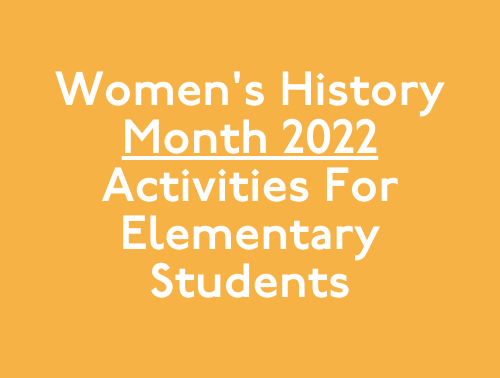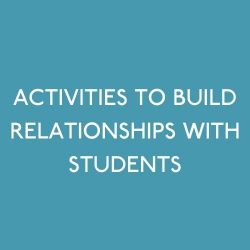Declared by Congress in 1987, March is Women’s History Month, which reminds us to celebrate and honor the many women who have made powerful contributions to our world. The 2022 theme for Women’s History Month is Women Providing Healing, Promoting Hope. Here are some ideas for women’s history activities for elementary schools:
Stock up your classroom library
There’s a long list of books that can expose students to significant figures and events in women’s history. Whether you read these books as read alouds or simply fill your classroom library with a special “women’s history” section, give your students access to resources that will help them learn more about women’s history. Here are five books to help get you started:
-
She Persisted by Chelsea Clinton
-
Little Leaders: Bold Women in Black History by Vashti Harrison
-
Shaking Things Up by Susan Hood
-
Malala’s Magic Pencil by Malala Yousafzai
-
The Tree Lady by H. Joseph Hopkins
Engage students in project-based learning
Create a research project that your students will find meaningful and engaging. Give your students options of women they can research and learn more about. Students can read books, watch videos, and listen to audio clips. Allow your students to present what they learn in an authentic way, such as: creating a podcast interview or writing a brochure. You could even plan a class wide wax museum and invite other classrooms to come visit!
Display meaningful quotes
Whether you’re on Pinterest or scrolling through Instagram, inspirational quotes are all around us. They can provide us motivation to continue moving forward in our own journeys. Creating a display in your classroom can provide extra motivation for your students, and serve as a reminder of the powerful women in history. To make the display even more meaningful, consider having student collect and post the quotes on a bulletin board themselves. This is also a display that can change throughout the year.
Create a timeline of significant periods in women’s history
Take time as a class to discuss significant events and time periods in women’s history, such as: women’s suffrage, the Equal Pay Act, Title IX, the development of women’s professional sports teams, and Hillary Clinton running for President. Creating a timeline will help provide context for your students to understand the difference in women’s rights, past versus present. Encourage students to talk to their parents, grandparents and other adults about how society has changed since they were children and share stories from your own family as well. It can also be helpful to point out prominent male figures who contributed to gender equality in various ways; this can act as inspiration for young men to help stand up for women’s rights.
Thank women who inspire you
You can (and should) celebrate women who we see in our day-to-day lives, not just the people we read about in our history books. Have your students write letters to the women in their lives who inspire them. Encourage your students be specific about what they’ve done that is inspirational. Maybe they started their own business, maybe they went to medical school, or maybe they are supportive, hardworking mothers and wives. Have your students actually send the women they choose the letters!
As we reflect on women’s history this month, it’s important to respect differing opinions and viewpoints. It can be difficult to express and teach the importance of women’s history to students amidst the current climate of divisive rhetoric that seems to be coming from all sides. It’s important for teachers to recognize that every child is coming in with unique experiences based off their own upbringing, background and culture. When approaching any topic, make sure you come from a place of empathy and create a safe space for discussion. And remember – although March is the designated time to celebrate women’s history, we can celebrate women and lift their voices up all throughout the year.
Sign up for Move This World’s newsletter to stay up to date on social emotional learning and other women’s history activities for elementary students.
Enter your email below!










